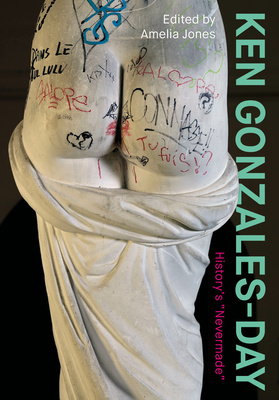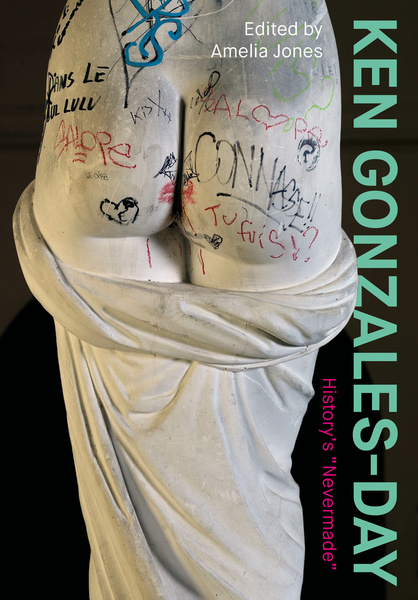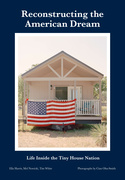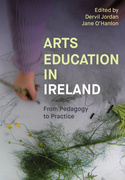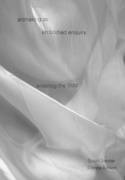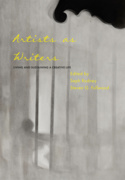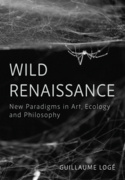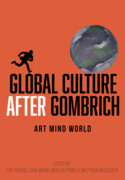Ken Gonzales-Day (Book)
History’s “Nevermade”
Accompanying an exhibition by the same name, this book addresses the life work of Ken Gonzales-Day, a Los Angeles based artist, scholar, teacher, and curator who explores race and place in his photographic and filmic works, drawings, and paintings as well as through his research and puts the artist’s major series of art works in context. 116 illus.
Edition
Ken Gonzales-Day’s work confronts the role of the visual in conveying history or in history’s absences, including those bodies and spaces deliberately erased, forgotten, or never acknowledged. As illustrated and discussed in Ken Gonzales-Day: History’s “Nevermade,” his photography, films, drawings, and paintings interrogate race and power, questioning how bodies are seen, rendered, or made invisible. His art moves between presence and absence, compelling viewers to confront their own position in relation to systems of oppression and representation.
This volume, accompanying the exhibition of the same name, offers the first comprehensive study of Gonzales-Day’s practice. Organized around his major series, sections of the book—including Rethinking History, Collecting Race, Forging Community, and Redrawing Boundaries— explore how his work engages with archives, bodies, museums, and public space to challenge institutional narratives. Through critical analysis and illustrated throughout, Ken Gonzales-Day: History’s “Nevermade” illuminates the profound political and theoretical stakes of his art.
Essential reading for students, scholars, and practitioners in art history, photography, museum studies, American history, and decolonial and queer studies, this book is a testament to the power of art to reckon with the past and imagine new futures.
Amelia Jones is Robert A. Day Professor and Vice Dean at Roski School of Art & Design, USC, Los Angeles, USA. Recent publications include the catalogue Queer Communion: Ron Athey (2020), co-edited with Andy Campbell (accompanying a retrospective of Athey’s work, which she curated); and In Between Subjects: A Critical Genealogy of Queer Performance (2021).
List of Figures
Director’s Foreword
Bethany Montagano
Acknowledgments
Amelia Jones
Introduction: Ken Gonzales-Day’s “Nevermade” and the Embodied Reworking of Discourse
Amelia Jones
Section 1: Finding a Path (Early Work)
Introduction to Section 1
Amelia Jones
1. Finding a Path: Amelia Jones in Conversation with Ken Gonzales-Day
2. Ken Gonzales-Day Narrative Timeline
Nadia Estrada and Yumu Huo (with Amelia Jones)
Section 2: Rethinking History (Queering/Decolonizing the Family)
Introduction to Section 2
Amelia Jones
3. Excerpts from Ramoncita Gonzales [aka Ken Gonzales-Day], The Bone Grass Boy: The Secret Banks of the Conejos River (New York: Charles Scribner’s Sons, 1892/1996)
Ken Gonzales-Day, “Foreword”
Kenny Gonzales [aka Ken Gonzales-Day], “Preface”
4. The Archive and the Nevermade: Queer, Trans, and Two-Spirit Histories in Ken Gonzales-Day’s Bone-Grass Boy
Ren Heintz
Section 3: Rethinking History (Archives)
Introduction to Section 3
Amelia Jones
5. The Space Between: The Lynching Project
Ken Gonzales-Day
6. Spectacularizing the Sacrifice: A Reading of the Erased Lynching Series
Cyrielle Lévêque
7. Searching for a Brown Commons: Racial Affect and Re-Enactment in Ken Gonzales-Day’s Lynching Projects
Mary K. Coffey
Section 4: Collecting Race (Skin/Museums)
Introduction to Section 4
Amelia Jones
8. “Race, Whiteness, and Absence in Studio Practice”
Ken Gonzales-Day
9. Profiled
Ken Gonzales-Day
10. “Different Measures: From Xipe Totec to Facial Recognition to System Overload”
Ken Gonzales-Day
11. Metropolitan Division: Ken Gonzales-Day between the Getty Museum and the LAPD
Jason Hill
12. The Profiled Series and Hemispheric Racial Formations
Tatiana Flores
Section 5: Forging Community (Publics)
Introduction to Section 5
Amelia Jones
13. Bringing Art Out of the Museum
Ken Gonzales-Day
14. Art as Propaganda: Advertising for Racial Equality in Ken Gonzales-Day’s Public Art
Ana Briz
15. Stepping into Memory: Ken Gonzales-Day and the Alternative Los Angeles
Nadia Estrada
Section 6: Imaging Bodies (Portraits)
Introduction to Section 6
Amelia Jones
16. Queer-ish: Photography and the LGBTQ+ Imaginary
Ken Gonzales-Day
17. Of Life as a Menace and a Shield: The Memento Mori and Pandemic Portrait Series
Taína Caragol
18. Ken Gonzales-Day’s Embodied Brown Historicity: Cecilia Fajardo-Hill in with Amelia Jones
Section 7: Redrawing Boundaries (Land)
Introduction to Section 7
Amelia Jones
19. Another Land / Decolonial Drawings
Ken Gonzales-Day
20. Engaging an Elder and Tracing the Past: Ken Gonzales-Day and Steve Pratt in Dialogue
Contributor Biographies
Index
Ken Gonzales-Day Works

